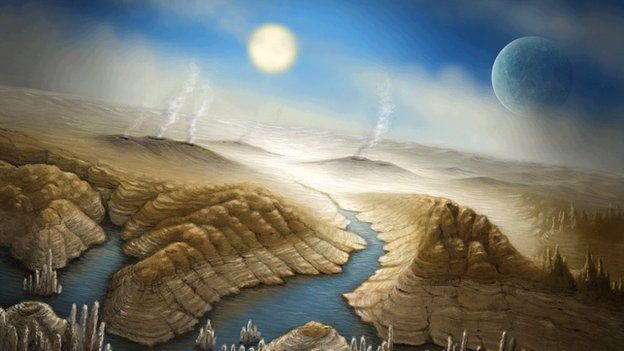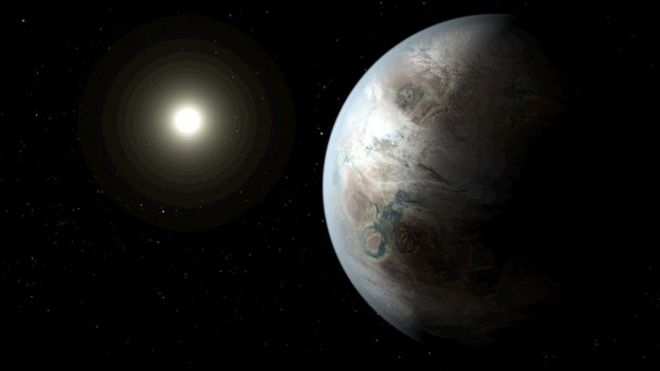A haul of planets from Nasa's Kepler telescope includes a world sharing many characteristics with Earth.
Kepler-452b orbits at a very similar distance from its star, though its radius is 60% larger.
Mission scientists said they believed it was the most Earth-like planet yet.
Such worlds are of interest to astronomers because they might be small and cool enough to host liquid water on their surface - and might therefore be hospitable to life.
Nasa's science chief John Grunsfeld called the new world "Earth 2.0" and the "closest so far" to our home.
It is around 1,400 light years away from Earth.
John Jenkins, Kepler data analysis lead at Nasa's Ames Research Center in California, added: "It's a real privilege to deliver this news to you today. There's a new kid on the block that's just moved in next door."
The new world joins other exoplanets such as Kepler-186f that are similar in many ways to Earth.
Determining which is most Earth-like depends on the properties one considers. Kepler-186f, announced in 2014, is smaller than the new planet, but orbits a red dwarf star that is significantly cooler than our own.
Kepler-452b, however, orbits a parent star which belongs to the same class as the Sun: it is just 4% more massive and 10% brighter. Kepler-452b takes 385 days to complete a full circuit of this star, so its orbital period is 5% longer than Earth's.
The mass of Kepler-452b cannot be measured yet, so astronomers have to rely on models to estimate a range of possible masses, with the most likely being five times that of Earth. If it is rocky, the world would likely still have active volcanism and its gravity would be roughly twice that on our own planet.
The new world is included in a haul of 500 new possible planets sighted by the Kepler space telescope around distant stars.
Twelve of the new candidates are less than twice Earth's diameter, orbiting in the so-called habitable zone around their star.

This zone refers to a range of distances at which the energy radiated by the star would permit water to exist as a liquid on the planet's surface if certain other conditions are also met.
Of these 500 candidates, Kepler-452b is the first to be confirmed as a planet.
Dr Suzanne Aigrain, from the University of Oxford, who was not involved with the study, told BBC News: "I do believe the properties described for Kepler-452b are the most Earth-like I've come across for a confirmed planet to date.
"What seems even more significant to me is the number of planets in the habitable zone of their host stars with radii below two Earth radii; 12 is quite a few compared to the pre-existing Kepler planet catalogue.
"It bodes well for their attempts to provide a more robust measure of the incidence of Earth-like planets, which is the top-level goal of the Kepler mission."





